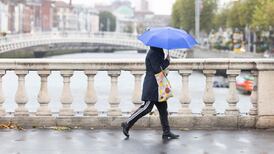Murder of Robert Hamill: Mr Robert Hamill (25), a construction worker and father of two whose fiancée was expecting their third child, was returning home from a function at St Patrick's Hall, Portadown, on the morning of April 27th, 1997, when he was beaten and kicked to death by Protestant rioters.
The killing occurred in the midst of a violent clash between about 50 people at the intersection of Thomas Street and Market Street. Police estimated that the group was composed of some 10 to 12 Catholics and about 40 loyalists.
In an 80-page report on the killing, Judge Cory said there were a number of police actions on the night which warranted investigation by a public inquiry. In addition, he said, there was a need to investigate allegations that a reserve constable, who was stationed in a Land Rover at the scene, attempted to pervert the course of justice by phoning one of the rioters the next morning and telling him to dispose of clothing he had been wearing.
If the constable's actions could be established, they would be "capable of being found to constitute the most flagrant type of collusion. His actions did not constitute the simple turning of a blind eye. Rather they could be found to be carefully planned and premeditated actions taken to frustrate a murder investigation and to protect or to exonerate an individual who might have been guilty of murder."
The officer, identified as Reserve Constable B, had denied making a call to the suspect's home, or recommending that evidence should be destroyed. "It is obviously not for me to make findings of fact. However, the evidence referred to is of such a worrisome nature that it, of itself, requires that there be a public inquiry to resolve the issue," the judge said.
"If clothes were destroyed, then no forensic testing of them could be carried out and a party to murder may have avoided detection and identification with the deliberate collaboration and assistance of a police officer." Judge Cory said another issue which warranted investigation was the police reaction, or failure to react, to warnings about a possible clash on the night.
In addition, there was a question of whether the officers sitting in the Land Rover could hear the shouts and screams of two women who were walking along the street with Mr Hamill when he was attacked. If such screams were ignored, "that could constitute an act of collusion that encouraged or aided the Protestant rioters by turning a blind eye to their behaviour".
He said there was also a question as to why one man was released from the Land Rover when someone at the scene told a constable that he was "one of the ones" who assaulted Mr Hamill.
Judge Cory said that the hospital phoned to advise police of the gravity of Mr Hamill's inquiries at 4.35 a.m. "From that moment the scene should have been taped off and samples taken"
However, the scene was not closed off until after 7 a.m. and "forensic evidence was not collected until some hours, and in some cases, days later". The judge said that taken individually, perhaps these actions could not be found to be acts of collusion. "However, taken in combination with each other and particularly with the alleged acts of Officer B, they are capable of supporting an inference of collusion."
Echoing comments expressed in the other cases, he said: "Without public scrutiny, doubts based solely on myth and suspicion will linger long, fester and spread their malignant infection throughout the Northern Ireland community.
"Yet in this case a public inquiry might, for example, find that the police on the scene did react reasonably and quickly when they became aware of the dangerous situation created by the cowardly actions of the group who attacked and kicked Robert Hamill."









